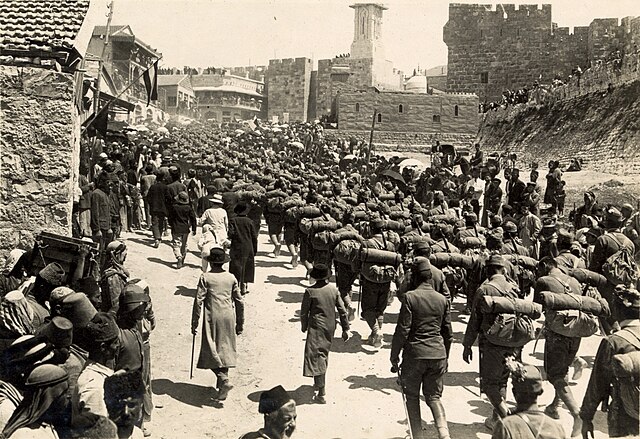The Mesopotamian campaign or Mesopotamian front was a campaign in the Middle Eastern theatre of World War I fought between the Allies represented by the British Empire, troops from Britain, Australia and the vast majority from British Raj, against the Central Powers, mostly the Ottoman Empire. It started after British amphibious landings in 1914 which sought to protect Anglo-Persian oil fields in Khuzestan and the Shatt al-Arab. However, the front later evolved into a larger campaign that sought to capture the key city of Baghdad and divert Ottoman forces from other fronts. It ended with the Armistice of Mudros in 1918, leading to the cession of Iraq and further partition of the Ottoman Empire.
British and Indian machine gunners, Mesopotamia, 1917.
The Sheik-ul-Islam declaring a jihad ("struggle") against enemies of Islam (the Allies).
1914, Initial British offence
July, British offence
Middle Eastern theatre of World War I
The Middle Eastern theatre of World War I saw action between 30 October 1914 and 30 October 1918. The combatants were, on one side, the Ottoman Empire, with some assistance from the other Central Powers; and on the other side, the British as well as troops from the British Dominions of Australia, Canada, and New Zealand, the Russians, and the French from among the Allied Powers. There were five main campaigns: the Sinai and Palestine, Mesopotamian, Caucasus, Persian, and Gallipoli campaigns.
A timeline of events on the Eastern and Middle-Eastern theatres of World War I
The Gallipoli Campaign, February–April 1915
War Minister Ismail Enver of the Ottoman Empire
Austrian troops marching up Mount Zion in Jerusalem, 1916








